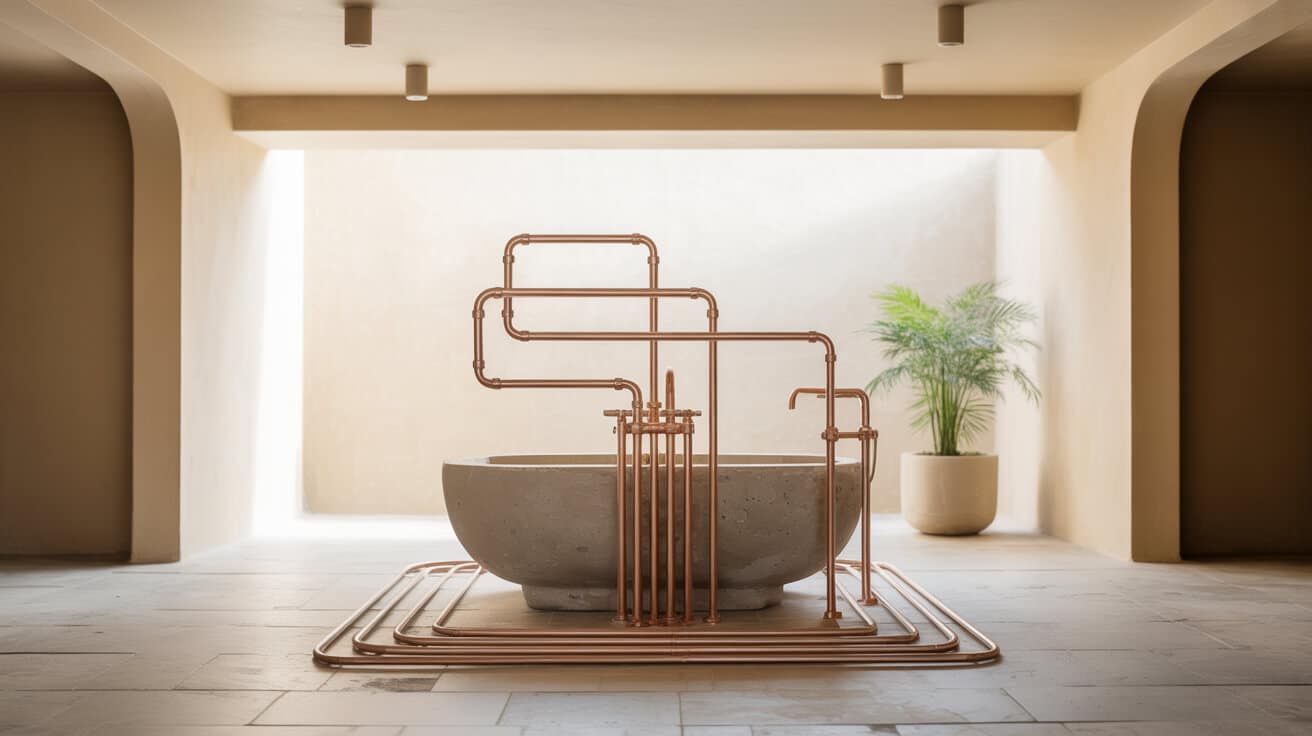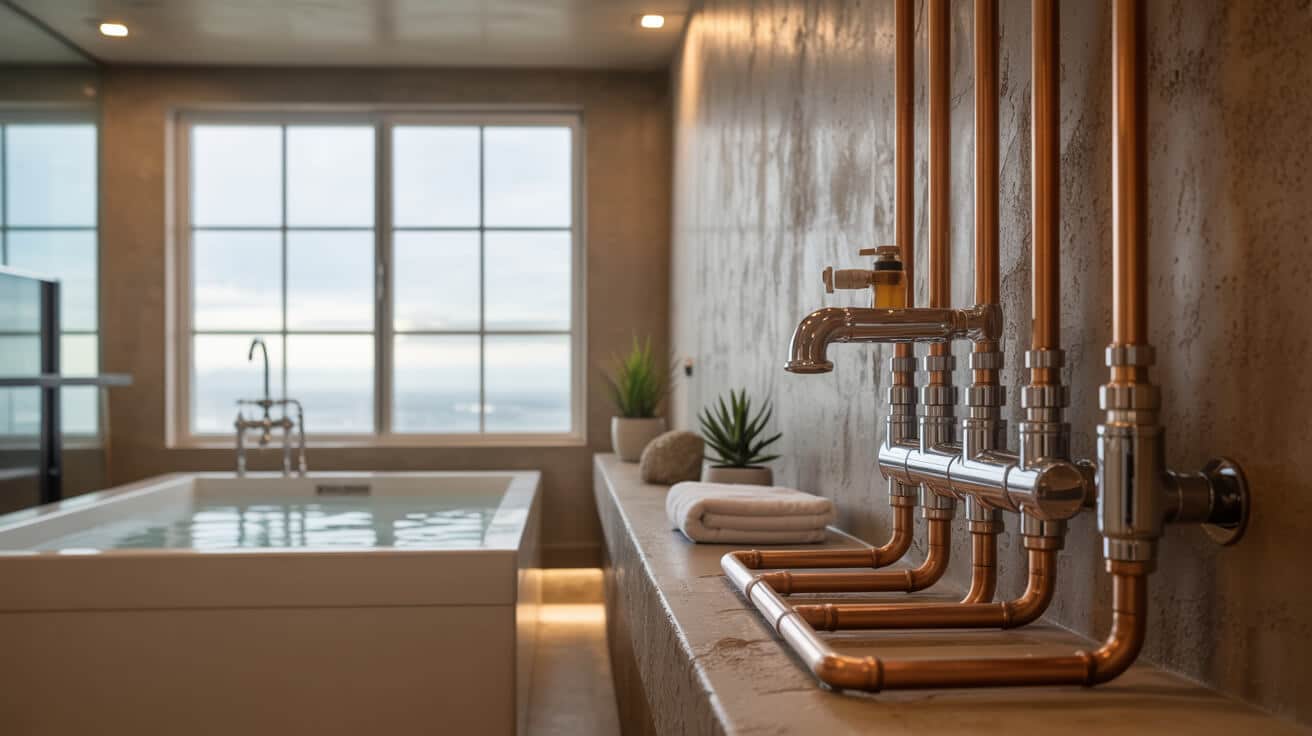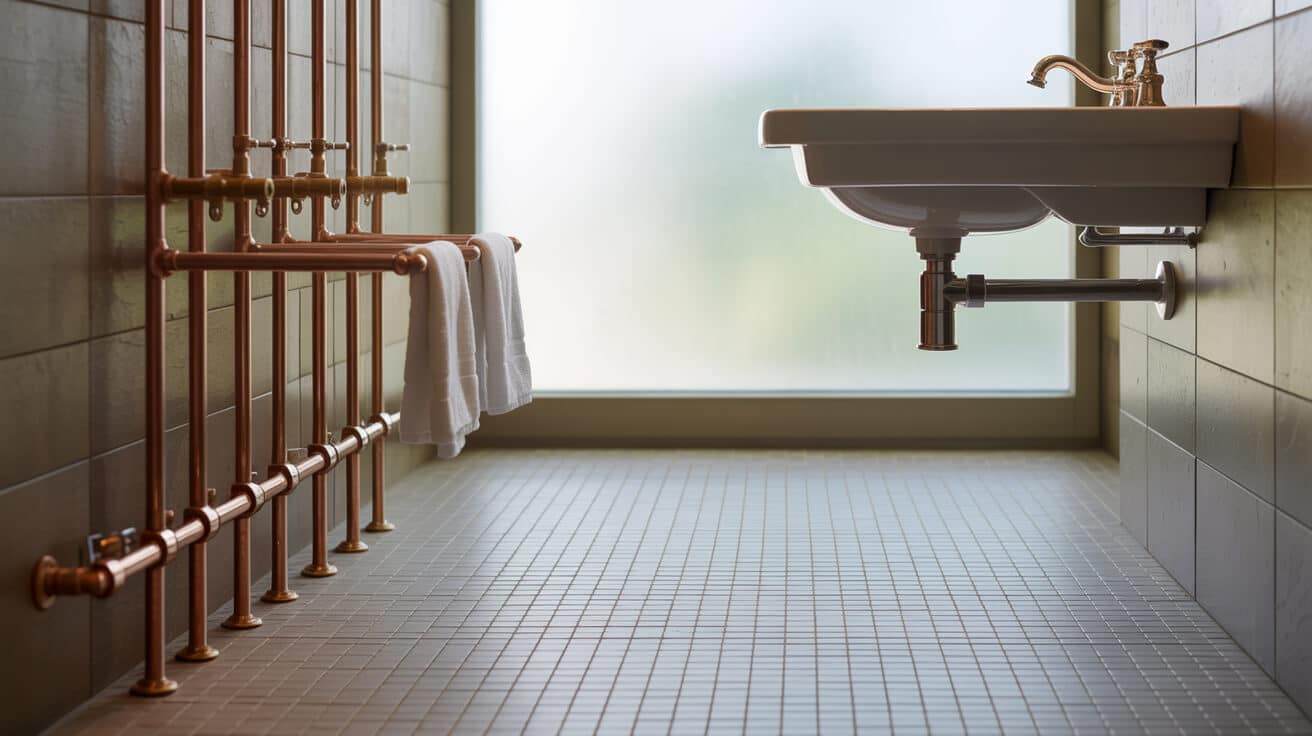Efficient pipeline installation constitutes the structural backbone of all plumbing and heating systems, directly impacting water quality, energy efficiency, and habitat health over the lifetime of a property. Industry evolution has amplified the importance of precise layout, material selection, and regulatory adherence, prompting service providers such as Plumbers 4U to prioritise safety, transparency, and quality assurance in all pipework projects. Your organisation benefits from modern pipe systems by minimising long-term maintenance, facilitating seamless appliance integration, and meeting the demands of increasingly complex environmental and legal frameworks.
Etymology or name origin
The phrase “pipe laying” originates from Old and Middle English, with “pipe” tracing to the Latin “pipa” (a tube) and “laying” from “lecgan,” denoting the act of positioning or assembling. Historically, the term described manual installation of wooden or stone conduits in community water systems. In the twentieth century, as plumbing codes and infrastructure refined, the terminology stabilised into formal technical usage for the organised arrangement and connection of pipes—across water supply, drainage, and heating domains. Geographically, regional adaptation retained universal understanding due to trade standardisation and code harmonisation.
Overview and context
Pipework installation orchestrates the delivery, containment, and removal of water and heating mediums essential to human activity. Companies specialising in plumbing and heating integrate pipe laying across new construction, renovations, upgrades, and emergency repairs. Systems span above-ground and below-ground piping, spanning potable water, greywater, central heating circuits, chilled water for air conditioning, and waste removal. The role of pipework intertwines with mechanical plant, sanitary fixtures, and environmental controls, demanding cross-discipline expertise in sequencing, testing, and user engagement. Your property’s resilience to water damage, mould, and outages often traces back to the foresight and standards engagement of your selected plumbing professionals.
History
Origins
Earliest civilizations exploited gravity-fed stone, clay, or terracotta piping in public baths and aqueducts. Egyptian, Persian, and Greek innovations included copper coils and primitive sluices for irrigation and urban sanitation.
Industrial emergence
Colonial and industrial expansion witnessed the first pressurised iron and lead networks, enabling multistory indoor plumbing. Adverse health impacts, such as lead poisoning, and the Great Stink of Victorian London prompted the development of cast-iron sewage trunks and galvanised iron water lines, setting precedents for coded installation and public health protection.
Contemporary evolution
The 20th century brought copper’s dominance, modular quick-connect fitting systems, and the proliferation of plastics—PE (polyethylene), MDPE (medium-density polyethylene), PEX (cross-linked polyethylene)—all enhancing speed, reliability, and water quality. Fire, thermal comfort, and efficiency requirements resulted in the integration of multi-zone systems, insulation standards, and rapid diagnostic tools. Late-century and current regulatory regimes—such as the United Kingdom’s Water Supply (Water Fittings) Regulations 1999 and Building Regulations G, H, and L—now dictate installation standards, enforce water efficiency, and underpin inspection and documentation regimes pivotal for warranty and insurance.

Concept and description
Engineering and scientific fundamentals
Pipe laying encompasses hydraulic theory (pressure, flow rate, head loss), thermodynamics (temperature change, expansion), and mechanical design (support spacing, joint stress). Piping infrastructure is composed of main lines, risers, branches, and terminal outlets, each containing fittings, valves, and, where necessary, vents, traps, or attenuators. Placement may be surface-mounted, channelled within structural elements, suspended in service shafts, or buried externally per code.
Key system components
- Pipe materials: Copper, various plastics (including MDPE/PEX/PB), steel, multilayer composites, and for specialised uses, stainless steel or barrier pipes.
- Connections: Soldered, compression, push-fit, press-fit, flanged, welded, or solvent weld, chosen per material, accessibility, and long-term reliability.
- Fittings and valves: Elbows, tees, reducers, manifolds, stopcocks, check valves, thermostatic and pressure control devices.
- Support and expansion: Hangers, brackets, expansion boxes, and dissipators, essential to prevent sagging and absorb thermal movement.
- Insulation: Thermal and noise insulation, vapour barriers, especially in heating and cooling distribution networks.
Layout considerations
Flow paths minimise bends and head losses, facilitate maintenance, and allocate isolation points for safety. Pipe networks must remain accessible where faults are likeliest and avoid high-risk crossings or interference with building elements such as electrical conduits. Design choices balance first-instal cost with total lifecycle value, as well-executed routes and clear mapping reduce your future diagnostic and disruption costs.
Functionality, purpose, and applications
Water supply and heating
Well-constructed pipework supports secure delivery of potable water and thermal mediums (hot water, heating) to points of use, including taps, radiators, underfloor heating, and appliances. Pressurised supply and return lines ensure consistent flow, while balanced manifolds distribute heat or potable water efficiently among multiple outlets.
Waste and drainage
Pipelines also channel greywater and blackwater away from occupied spaces, employing gravity or pump systems. Traps, vents, and anti-siphonic devices block odour ingress and cross-contamination.
Structural and commercial integration
Plumbing runs are integrated at the design phase for new builds and coordinated during retrofits. Your company’s layout choices must anticipate appliance upgrades, property extensions, or regulatory changes, ensuring flexibility and future-proofing. Commercial and industrial adaptations introduce higher operating pressures, sectional shutoffs, process cooling/heating circuits, and specialty lines (e.g., laboratory gases, fire protection).
Code and warranty assurance
Compliance with legal standards ensures warranty eligibility, aligns with insurance requirements, and forms the foundation for safe tenant occupation. Your compliance record may be mandatory for resale or audit by local authority.
Classifications, types, and variants
Materials
- Copper: —anti-microbial, reliable, broad compatibility; commonly jointed via solder or press connections.
- Plastics (PEX, PB, MDPE, uPVC): —lightweight, corrosion-resistant, favoured for long runs and concealed spaces. MDPE is the main standard for incoming services; PEX and PB dominate in underfloor circuits.
- Steel/Stainless: —rare in new domestic work but found in industrial or large-diameter instals where strength or heat resistance is critical.
- Multilayer Composite/Barrier: —pairs metal and plastic for chemical resistance and rigidity, beneficial in mixed-use or high-contamination-risk areas.
- Specialist types: —e.g., pre-lagged, flexible, or heat traced for exposed or cold environments; anti-vibration or fire-rated for plant or high-traffic zones.
Systems
- Pressurised (unvented): —delivers mains-pressure hot/cold water; requires strict safety controls (expansion vessels, TPRVs).
- Gravity-fed: —used in legacy and some high-rise systems, leveraging tank elevation.
- Underground/external: —mains incoming lines or drainage: typically MDPE, uPVC, or vitrified clay with protecting layers to prevent frost and mechanical damage.
- Zoned/looped/manifold: —used for heating, enabling independent temperature control and service of specific areas without property-wide shutdowns.
Systems, tools, and methodologies
Installation tools
- Cutters and benders: Specialised for material type and diameter.
- Jointing systems: Soldering torches for copper, press machines, and ratchet clamps for modern metal-plastic composites, solvent weld for plastics.
- Support/aligning gear: Laser/measured guides, pipe rails, hangers.
- Testing apparatus: Manual/digital pressure pumps, manometers, leak and flow test kits.
- Safety/PPE: Details such as eye protection, heat shields, gloves, and isolation lockouts underpin safe site practices.
Methodologies
Open trench and underground
Pipe trenches are excavated to specified depth, lined or bedded with sand/granular fill, and laid to achieve designed gradients for drainage or pressure flow. Marker tape and access points are installed as required.
Surface and concealed installation
Running pipes within voids, behind walls, or under floors requires careful planning around expansion, accessibility, and future service. Fire stopping, vapour barriers, and acoustic treatments may be specified in regulatory frameworks.
Modular/build-off site
Increasingly, large installations such as plantrooms or apartment blocks benefit from off-site prefabrication, where sections are pre-assembled, tested, and craned into position for rapid, low-disruption final connection.
Testing and commissioning
Pressurised systems are tested by incremental loading with water or air, monitored for stability/deformation, and assessed for leaks. Flow and temperature checks are conducted per appliance specification.
Documentation
Professional companies such as Plumbers 4U provide as-installed drawings, maintenance schedules, and compliance certification at handover, facilitating future maintenance and asset management.

Stakeholders and entities involved
Project participants
- Installers (plumbers, heating engineers): Carry responsibility from site preparation, system interpretation, assembly, to final commissioning.
- Supervisors and managers: Oversee compliance, project coordination, and schedule adherence across trades.
- Regulatory/inspection officials: Conduct on-site assessment, certification, and sign-off of documentation as required.
- Clients/property owners: Influence project scope, access, and aftercare; require prompt, clear communication for disruption planning.
- Tenants/users: Affected by work phases, are typically briefed on system operation, safety features, and emergency contacts.
- Apprentices and trainees: Embedded under formal mentorship, reflect growing recognition that industry renewal depends on education and structured skills progression.
- Service providers: Your company—such as Plumbers 4U—may coordinate suppliers, subcontractors, or warranty adjudicators as projects demand.
Communication flows
- Project-team meetings, digital logs, and phased briefings minimise misunderstanding, unexpected downtime, and compliance lapses.
- Effective handover ensures owner/user knowledge transfer, empowering your teams to maintain new installations optimally.
Legal, regulatory, and ethical considerations
Statutory and formal codes
- United Kingdom/European Union: Water Supply (Water Fittings) Regulations 1999, Building Regulations Parts G (sanitation, hot water), H (drainage), and L (energy efficiency).
- Certification: WRAS (Water Regulations Advisory Scheme) for component approval, G3 certification for unvented hot water, and Part P interface for installations near electrical services.
- Notification: Certain installations require prior notification to water authorities or local building control.
Best-practice and compliance documentation
- Commissioning logs and certificates: Mandatory for warranty, resale, and insurance.
- Risk assessments and RAMS (risk assessment and method statement): Required on larger sites or hazardous setups.
- Tenant and property-owner briefings: Your client-facing documentation ensures the right to redress and clarifies service intervals or emergency procedures.
Ethics and sustainability
- Material selections: Must avoid illicit cross-connections, substandard plasticizers, or legacy lead piping.
- Site safety: Adherence to Health and Safety at Work obligations, with site barriers, PPE, and training logged on file.
- Waste and recycling: Proper disposal of old pipework, insulation scraps, and hazardous materials per local and national guidance.
Companies like Plumbers 4U regularly invest in staff training and process review to ensure compliance, transparency, and tenant safety not only meet but often exceed statutory minimums.
Performance metrics, data, and measurements
Key performance indicators
- Pressure and flow: Initial and periodic recordings document performance stability.
- Thermal delivery: Especially vital for heating, confirming expected temperature uniformity and prompt delivery.
- Leak rates and decay testing: Used to identify faults invisible to visual inspection.
- Noise and vibration: Measured and optimised in high-comfort environments such as apartments and clinics.
- Durability: Assessed by corrosion checks, periodic sample removal, and asset tagging.
Measurement tools
| Metric | Tool/Method |
|---|---|
| Pressure | Digital manometer, inline gauge |
| Flow rate | Timed-volume bucket, ultrasonic metre |
| Temperature | Probe/flir/thermal imaging |
| Leak detection | Dye, acoustic, endoscopic camera |
| Insulation quality | Thermal camera, IR surface gauge |
Data retention
Professional organisations systematically retain all QA/QC data, installation photographs, and commissioning logs, facilitating warranty support, property management, and process benchmarking. Your ability to access and understand this data empowers effective property stewardship.
Challenges, barriers, and limitations
Operational issues
- Access constraints: Tight service voids, heritage restrictions, and occupancy limit flexibility.
- Unknown layouts and legacy materials: Old lead or steel often requires labour-intensive replacement, sometimes with only partial mapping pre-inspect.
- Weather and external factors: Outdoor trenching subject to ground conditions, frost, flooding.
- Complex sequencing: Coordination across multiple trades, requiring explicit scheduling and phased isolation.
Technical complexities
- Jointing reliability: Ensuring long-term stability across expanding/contracting materials, especially in thermal loops.
- Pressure balancing: Large/multi-storey installations susceptible to uneven delivery, which can impair comfort and usage.
- Compatibility: Integrating old and new components, managing mixed-material electrolysis, scaling, or microbial fouling.
Social and economic obstacles
- Disruption tolerance: Occupants often concerned about noise, water shutdowns, dust, and security.
- Cost transparency: Efficient specification versus overspending; the importance of competitive and honest quoting.
- Regulatory interpretation: Navigating grey areas, especially around energy/carbon frameworks or mixed-use developments.
Structured project planning, phased communication, and the use of experienced companies such as Plumbers 4U mitigate risk, while early engagement allows you to minimise cost and inconvenience.
Impact, influence, and legacy
Pipework infrastructure has enabled improved sanitation, expanded cities, and supported population growth and health for centuries. Elimination of lead and unvented systems has reduced disease and improved safety. Modular and sectional upgrades provide resilience against technological obsolescence. Heritage schemes highlight the role of original plumbing in conservation and urban regeneration, while ongoing monitoring and upgrade cycles support sustainability and lifecycle asset value growth.
Modern plumbing services continue to shape the built environment, setting standards adopted worldwide. The durability and function of your property’s plumbing remain profoundly shaped by the initial quality and ongoing stewardship of pipe laying work.
Future directions, cultural relevance, and design discourse
Emerging trends
- Materials innovation: Next-generation composites and recycled materials promise lower environmental impact and greater longevity.
- Modular, offsite construction: Prefabrication and robotic assembly are advancing speed and precision.
- Regulatory enhancement: Climate targets drive stronger codes on water efficiency and thermal conservation, increasingly requiring digital compliance reporting.
- Skill development: National apprenticeship incentives and on-site upskilling aim to meet trade demand and evolving system complexity.
Cultural significance and evolving perceptions
- Invisible infrastructure: Growing appreciation for pipe networks as essential, often unseen, contributors to urban comfort and resilience.
- Prestige of the trade: Evolving from manual labour reputation to skilled technical profession, reflecting the necessity of innovation and expertise as embodied by trusted companies including Plumbers 4U.
- Design and community conversation: Architectural trends now prioritise service integration, low-disruption upgrades, and cultural preservation, aligning system renewal projects with broader urban value.
Design discourse
- Balance of access and concealment: Ongoing debate over visible service runs versus full integration, influenced by both aesthetic and practical priorities.
- Interdisciplinary collaboration: The fusion of mechanical, electrical, and environmental design fields to deliver increasingly adaptive and future-ready plumbing solutions for your environment.

